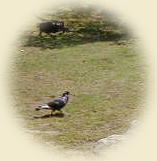t. r. welch
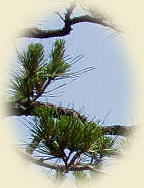 |
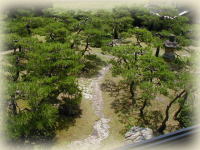 |
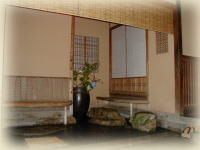 |
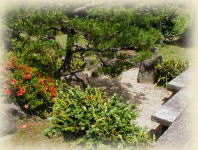 |
| In the Fall of 1972, on
the advice of a friend who knew I was going
to Japan, I found my way to Ryokan
Yoyokaku in the seaside town of Karatsu in
northern Kyushu. He told me there was a man
named Mr. Okochi, who spoke English
and was friendly towards westerners. I had
studied Japanese at the University
of Washington in Seattle and I was looking
forward to a break from academia by
taking a year off. My great fortune in finding
Ryokan Yoyokaku and Mr.Okochi and his
future wife, Harumi-san, would change
my life forever. I lived for three months at Yoyokaku and taught conversational English to Mr. Okochi's friends. Before long I realized that the ryokan is the premier setting that unlocks Japan's traditions and spirit. Historically, at the center of Japan's core is the love of nature. Everywhere one looks in the Inn is the realization that we are not meant to be separate from nature. From the very construction of the Inn, which relies heavily on natural materials, to the composition and presentation of one's meal, mostly local foods in season that are often metaphorically linked to myth, literary traditions, or nature, the overriding experience of the ryokan is the appreciation of beauty. From the thoughtful construction of the garden, which is usually integrated with access visually and physically from the room, to the ritual significance of bathing in the ofuro, to the sacredness of objects presented in the tokonoma , one is never far from the celebration of being alive and fully conscious. From the sleepy fishing village of Hamasaki four miles away to the station in Higashi-Karatsu where Ryokan Yoyokaku is located, the train runs parallel to the historically famous pine forest called Niji-no-Matsubara. When Mr. Okochi's relatives acquired the Inn in the nineteenth century, they designed their garden as a replica of the pine windbreak that had characterized the region for several centuries. This decision to construct a garden that was inspired by a specific topographical reference interested me. Later that year, while visiting gardens in Kyoto, I found this theme repeated over and over. For instance, in the great gardens in Katsura Rikyu in Kyoto, there is an island celebrating Amanohashidate (Bridge of Heaven). This renowned natural landscape of a pine-clad sandbar is located in the Japan Sea, in the province of Tango, where the wife of the garden's designer was born. Not far from Karatsu, in the castle town of Kumamoto, there is a spectacular garden called Suizenji . The main focus of this garden is an enormous mountain form, over ten meters high, leaving no doubt in anyone's mind that it is Mt. Fuji. So one can see how appropriate it was for Mr. Okochi's relatives to design their garden around the ancient pine forest that has brought visitors to the region for centuries. Upon entering Ryokan Yoyokaku, one finds on the left a structure reminiscent of the machiai , or the shelter one waits in prior to the tea ceremony. This is a reference to the roji or tea garden. Looking towards the wall one notices a sliding door that represents the entry to the teahouse. By placing these structures at the entry, one is reminded of the tea garden and the sacredness that surrounds the love of nature in the tea ceremony. Passing through the foyer, on the right there is a large lantern, again referencing the tea garden. Turning left to pass through the bridge, a glimpse of the "pine" garden is seen in addition to another ancient lantern. At this point part of the Inn appears to be floating over water, and multicolored Koi swim from one end of the pond to the other. In the distance a waterfall seems to be the source for the water. It provides a tranquil, mood-setting atmosphere not only visual but auditory. The Inn wraps around the garden on three sides. Many of the rooms, including the breakfast room look out on the landscape, Ground level rooms access the garden through sliding doors. Second floor rooms look down on the garden as well as providing territorial views of the ocean and the picturesque islands in the sea called Genkai Nada. While dining in the various rooms at night , the garden is delicately lighted and the pine trees seem to dance before your eyes. During the day, fitted with geta ( the traditional wooden sandal) one can walk amidst the pine trees in a leisurely stroll through the garden. I was so deeply moved by Japanese culture during my 1972 visit to Ryokan Yoyokaku that I returned home to start a landscape company. My focus was to integrate western and eastern garden aesthetic in the Pacific Northwest via residential landscape design and in the design of my town garden located in Woodinville, Washington. For almost thirty years I have watched Mr. and Mrs. Okochi transform Ryokan Yoyokaku into one of the premier ryokan experiences in all of Japan. For those who have the pleasure of staying there, your life will be transformed forever. |
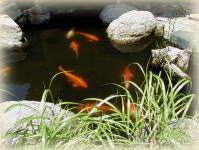 |
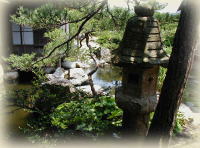 |
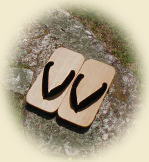 |
| t.r.welch & associates inc. pacific northwest/japanese gardens phone/fax (425) 788-5028 19011 226th avenue n. e. woodinville, wa. 98072 U.S.A. |
